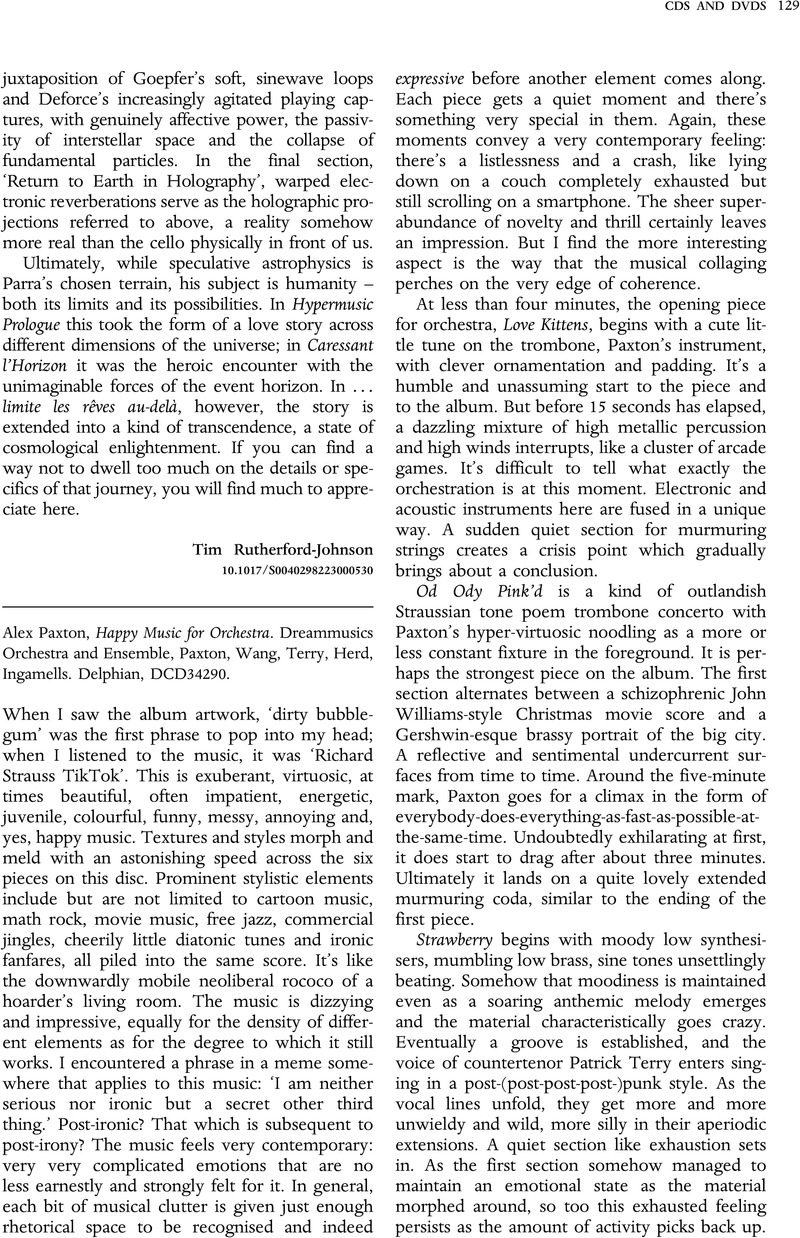No CrossRef data available.
Alex Paxton - Alex Paxton, Happy Music for Orchestra. Dreammusics Orchestra and Ensemble, Paxton, Wang, Terry, Herd, Ingamells. Delphian, DCD34290.
Review products
Alex Paxton, Happy Music for Orchestra. Dreammusics Orchestra and Ensemble, Paxton, Wang, Terry, Herd, Ingamells. Delphian, DCD34290.
Published online by Cambridge University Press: 01 September 2023
Abstract
An abstract is not available for this content so a preview has been provided. Please use the Get access link above for information on how to access this content.

- Type
- CDs AND DVDs
- Information
- Copyright
- Copyright © The Author(s), 2023. Published by Cambridge University Press



